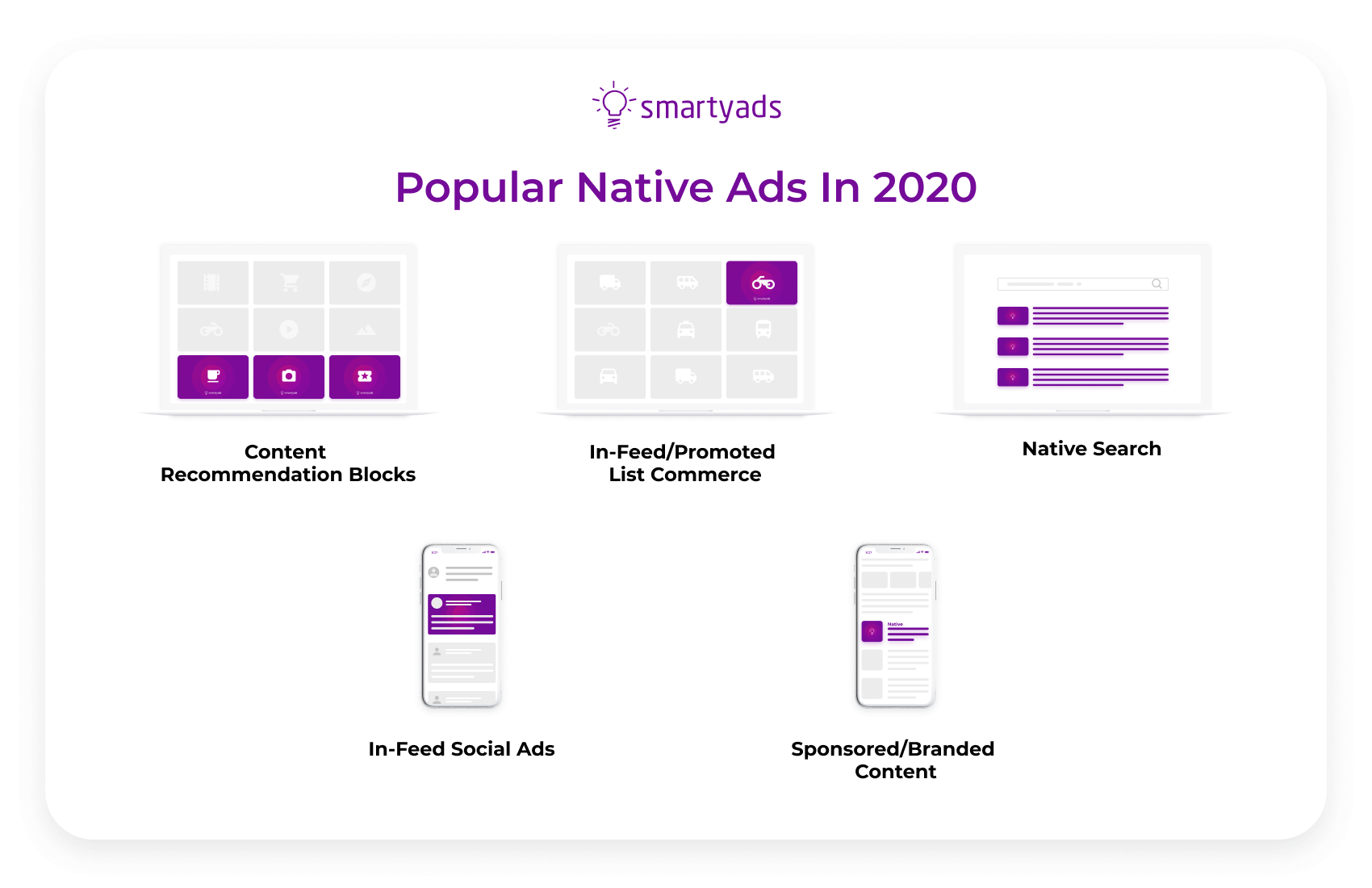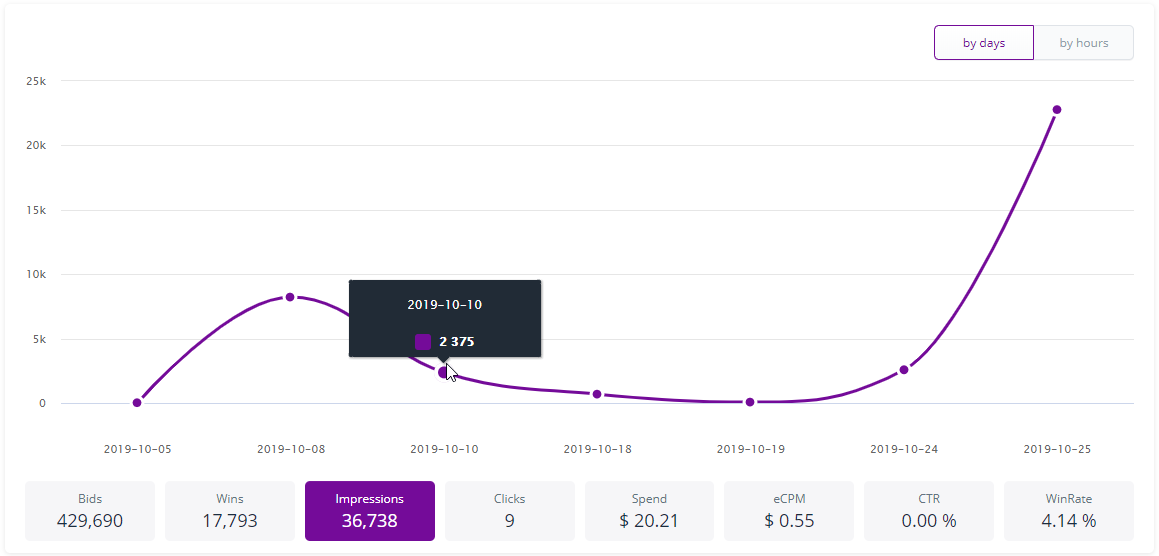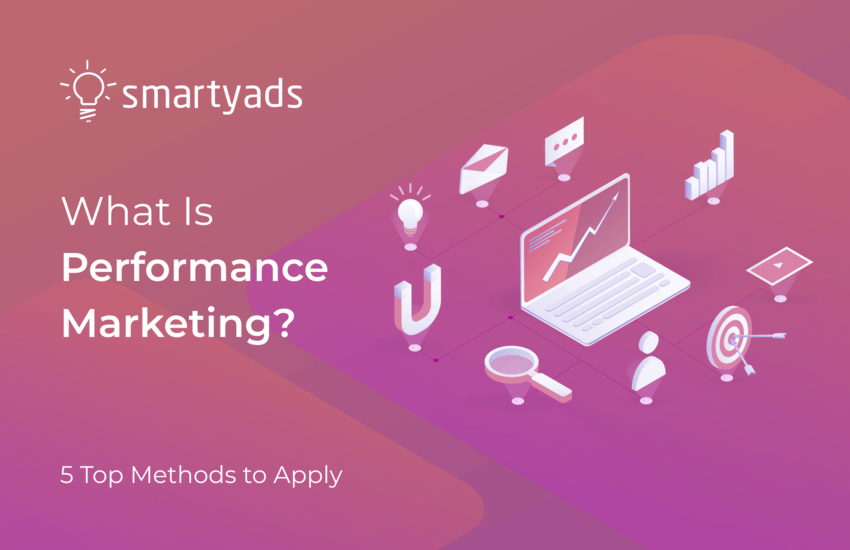Performance marketing made its way into the online space relatively recently. Prior to the time when digital advertising started using metrics to measure performance, the brand could only use hunches to define whether the ad campaign was successful enough to increase the sales, generate brand awareness, or trigger the desired reaction. This all could lead to marketing and advertising programs to be ineffective because there was no way to investigate how efforts impacted results.
Performance media marketing today helps advertisers to achieve almost every goal when it comes to performance, from the total number of clicks on the ad to the number of shares and app downloads. What are the popular types of performance marketing, how they are different from brand awareness campaigns and is there a good sign that you should use both? Let’s sort these questions one-by-one.
What is performance marketing?
What is performance marketing, and what are the reasons advertisers choose it over other kinds of campaigns?
Performance marketing is a type of marketing strategy according to which advertisers pay only for the campaign results instead of the amount of work done, time, or efforts. It is focused on measurable data and metrics such as clicks, downloads, the number of conversions. As well, performance campaigns can be directed towards the lead generation.
This kind of marketing has its own set of tools and technologies aimed at achieving particular KPIs and providing measurable results. Performance marketing network (CPA network), social media promotion, native advertising, SEM, programmatic media buying, all of these can work as channels for performance marketing campaigns.
Why do performance campaigns gain momentum?
Typically, the client comes to the agency with one purpose - to increase sales at minimal investment. Still, it often turns out that after a few months of cooperation with the vendor, the advertiser ends up with little to no results from launching ad campaigns. The vendors, meanwhile, don’t have access to performance data on the client’s side to compare the results, make conclusions, and change the campaign course. In such a situation, it is hard to assess the true quality of the vendor’s work.
Because of this problem brands started looking for different payment concepts that would guarantee measurable results - sales, subscriptions, registrations, traffic, clicks - depending on the goals they set.
Pros and cons of online performance marketing
Pros. The main benefit of performance marketing is that it removes the need to invest in ad campaigns with unknown results. In other words, this approach minimizes any risks related to the fact that efforts don’t always guarantee great results.
Cons. The task of performance marketing is to identify a target user action, motivate the user to perform it, and then measure the result. It can be done effectively only if the person who sets up a performance campaign knows all necessary data: target audience, objectives, specifics of business processes, and services/goods. Thus, implementation of performance marketing can be hindered by the lack of such information as well as lack of capacities to support omnichannel campaigns.
Performance or brand awareness campaigns? What’s better for business?
Unlike performance-oriented, brand awareness campaigns are directed towards raising the overall brand recall and recognition. Brand-awareness campaigns are measured in a total number of ad views - the number of impressions served to the targeted users during a particular time. When the DSP platform came to the scene, serving and measuring the brand awareness campaigns turned into a quick and trouble-free procedure - the platform automatically generates on-demand performance analytics across all data points.
Performance marketing network can work according to the following models:
- CPM (Cost per mille). The advertiser pays for 1000 served impressions.
- CPC (Pay per click). The advertiser pays for the definitive amount of clicks.
- CPS (Cost per sale). The advertiser pays only when the sale has been directly triggered by the ad.
- CPL (Cost per lead). The sum of money is paid when the targeted user signs up with a form. The ad usually encourages the user to make this action.
- CPA (Cost per action). Advertisers pay when a specific action is completed (a sale, a click, etc.).
- CPD (Cost per download). The money is paid per each app download triggered by the user.
CPM and CPC are the most popular payment models used in digital advertising. CPM model is mostly used for brand awareness campaigns.
In the CPM model, advertisers pay for 1000 impressions served on websites, (no matter how many clicks those views are able to generate). CPC ad campaigns, meanwhile, are measured in the number of clicks. Thus, for instance, as soon as the number of clicks is achieved, the ad campaigns end and the advertiser pays for the defined number of achieved clicks (no matter how many impressions it took to achieve those clicks). Sounds very effective. Still, if e.g., banner and offer on it are intriguing enough to drive lots of clicks, an advertiser may end up paying less for a much greater number of clicks that come out of 1000 impressions with CPM.
Some marketers believe that performance marketing solves all challenges related to sales stimulation, however, it can’t be positioned as an alternative to branding, because the latest is responsible for completely new demand generation. Performance campaigns are really strong in their ability to convert customers. At the same time, it converts existing customers, and the success of this conversion will largely depend on the brand’s reputation and customer loyalty and engagement (that brand awareness campaigns foster).
Top performance media marketing channels
Online performance marketing channels like native advertising, sponsored content, social media, SEM, and affiliate marketing are considered to be the most popular for performance campaigns. However, in order for performance marketing to really work, one needs a powerful and accurate tool for tracking desired KP in real-time: clicks, impressions, sales, downloads, subscriptions, etc. Let’s discover how to apply and measure each of these channels.
Native advertising
What is native advertising? Native advertising is a type of advertising that organically fits into the content of the site. It is often perceived by visitors as part of the viewed website as it easily replicates its functions, looks, and design. One example of native advertising you've probably already stumbled upon is a native Facebook video, which initiates by default without any clicks required.
This format is now increasingly popular because the cost per view is quite low, competition is low, and the reach is high. Such native ad formats like banners and text-graphic blocks are also popular in digital advertising. Mobile native ad trends are represented by recommendation widgets, in-search ads, and in-feed social ads.
 Advantages of native advertising:
Advantages of native advertising:
- Ability to publish detailed promo materials featuring photos, videos, links, and other necessary elements.
- Native ads don’t irritate the users and don’t cause advertising fatigue as well as a problem with banner blindness.
- Native ads are very engaging as they deliver useful information to the users. As a result, native ads end up being the most reposted and shared format among others.
- Native ads are resistant to ad blockers.
- Native posts can complement the overall content marketing strategy for publishers.
How to choose your format for a performance campaign?
If you strive to get reach and brand awareness, choose native display. If you need engagement - opt for sponsorship content. Native advertising can work well at the bottom of the sales funnel, namely in the conversion phase. For this, they should be used in conjunction with personalization according to user interests.
Modern DSP platform can help advertisers to connect external data sources to implement such campaigns. High efficiency of the native formats increase the performance of campaigns, plus, they significantly reduce the cost per lead. Native ads generate much better user loyalty and trust, which translates into much higher CTR.
Measuring native campaigns
Specialized native performance marketing platform as well as average DSP platform both can generate performance statistics for native ads in real-time. On DSP advertisers can select custom metrics and craft reports according to their own needs: clicks, impressions, eCPM, CTR, and so forth. The other very convenient function of DSP is that each native creative can be tracked with Pixel which gives insights into how exactly users interact with ad units.

Sponsored content
Sponsored content also belongs to the performance media marketing campaigns. It is a comprehensive term that refers to articles, videos, images, and any other form of content the creation of which can be commissioned to the publisher.
Sponsored content stimulates non-intrusive valuable user experience on-site. To a certain extent, sponsored articles can also be considered as a form of native advertising as they provide useful content with advice, tips, and stories that contain hidden advertising - usually a reference with a link that leads to the landing page with the mentioned product or service.
Advantages of sponsored content
- The least intrusive type of advertising which in many cases is not even recognized as advertising.
- Sponsored content drives loyal traffic and very high conversion rates.
- Sponsored content gets reposted, saved, and actively shared by readers.
- With native articles, brands can build a better brand image through constant communication with customers.
How to create sponsored content
Sponsored articles can work wonders for online marketing and advertising campaigns. For this, an advertiser should find a publisher whose site corresponds to the thematic of the advertised product. That is a sure way to hit the targeted audience and guarantee message relevance. Then, the advertiser negotiates with publisher collaboration terms. The publisher produces a certain number of articles and publishes them on-site for a negotiated payment.
Measuring sponsored content
Track conversions from branded content using Google Analytics. Accurate data tracking (which Campaign URL Builder helps a lot with) will also help you to select the content that generates a powerful flow of traffic to the landing page (should be negotiated with website publishers).
Social media
Social media advertising is actively used in online performance marketing. In some cases, brands create the whole stores right inside social media publics. Advertising on social media has marched far beyond placing ad messages in specialized publics and communities. Performance social campaigns can be successfully implemented with influencers.
An advertiser should find an influencer with a suitable targeted audience and negotiate regular placement of promoted materials. This way their subscribers will see the message and take it as a personal recommendation.
Best practices for social campaigns
Firstly, ad units placed on social media should be relevant to the targeted audience. Secondly, the influencer should have a sufficient number of active followers and subscribers. The more likes repost the public generates the more conversions you can expect.
Plus, always keep an eye on the new social advertising opportunities. For instance, Facebook recently launched leads ads - a lead purchasing option for advertisers (collects user data without redirection to any external page). Periscope is a new application for video broadcasts on Twitter - it is a new advertising channel with relatively low demand (a good chance for advertisers to stand out).
Measuring social media campaigns
Using Google Analytics you can track where the users come from, traffic from separate social campaigns, and conversions from social channels. As well, social media stats can provide advertisers with statistics regarding the number of subscribers (e.g, to corporate page), their activity during the period, reach, CTR, and the number of conversions.
Search engine marketing
Online performance marketing has known SEM for a long time. In fact, it has been used by performance marketing professionals for decades, that’s why Google’s profits from advertising are now counted in billions of dollars. SEM refers to online marketing methods because the purpose of it is to encourage clicks via organic search or PPC ad campaigns (which we will talk about).
Marketing professionals should carefully consider the choice of the words associated with their brand, this way they will be apple to select the right keywords that complement their advertising strategy.
Best practices for search engine marketing
SEM functions on the basis of the real-time auction, in this matter it is very similar to programmatic ad buying. Every time the user enters the search query, the auction is initiated on the search result page. Based on selected keywords advertisers participate in this auction that automatically determines whose bid for the click is highest and thus, who wins.
The crucial part of your SEM strategy success will depend on the keywords and their structuring. In order to find the right keywords just enter a word that is associated with your product or service in the keyword search tool like Google Keyword Planner, Ahrefs, Semrush etc. The perfect keyword for eCommerce should have commercial intent, sufficient frequency, and low competition. The logical keyword structuring will also help your campaign achieve better click-through-rates and performance.
Measuring SEM campaigns
There are traffic-based metrics like CTR and clicks. Conversion-based metrics like conversion and cost per conversion. ROI, and finally your most productive keywords — all of them you should analyze during the campaign. To see this data in the Google ads reports, you should link your Google ads to the Google Analytics account.
Affiliate marketing
Performance marketing with affiliate campaigns gained popularity long ago. It is a form of agreement between publisher and advertiser where the publisher guarantees to provide traffic or sales to the advertiser in exchange for a commission. For this, publishers usually place ads or links on their website. For each click or sale made on their website, publishers get payment.
For now, affiliate marketing drives almost the same number of orders in eCommerce as email campaigns. Publishers often incorporate the offers in the content organically in the form of links in order to keep the user experience consistent and unintrusive.
Best practices for affiliate marketing
One way to tap into affiliate marketing is to search for affiliate marketing and advertising programs manually. The other, more optimal way is to use an affiliate platform that can position itself as a performance marketing network.
Performance marketing network can connect together advertisers and publishers so that they could find each other and establish strict collaboration details like payout terms, size, etc. (can be guaranteed by the platform). Examples of affiliate marketing networks include such platforms as Everflow, Post affiliate pro, Link trust, Cake, and so on.
Measuring affiliate marketing
In order to measure your affiliate marketing campaign select some measurable metrics according to which your campaign functions: click-through-rate, number of sales. As well you can measure ROI, conversion rate, number of leads, traffic volumes, and other metrics on affiliate marketing platforms that generate performance reports automatically for suitable periods.
To sum up
Performance marketing has a special approach to promotion, because it calculates, and analyzes key campaign metrics according to what has been achieved. There’s nothing as effective as performance media marketing campaigns when it comes to converting loyal customers, that’s why brand awareness and performance campaigns are both essential for your marketing strategy. In order for performance marketing to really work, you need powerful and accurate tools for tracking results. Programmatic advertising platforms can help you to automate brand awareness and performance campaigns so that you could run campaigns independently, analyze them in real-time, and navigate their course with ease.




